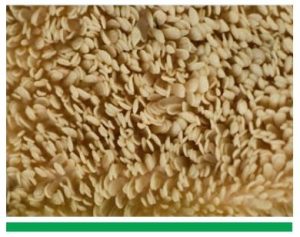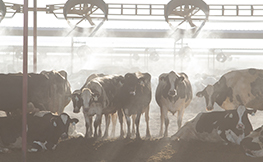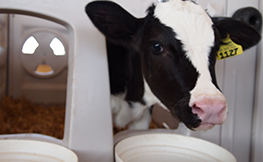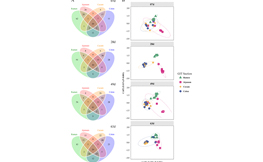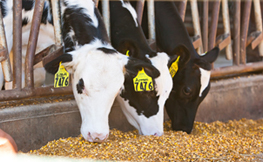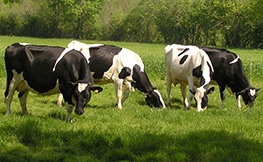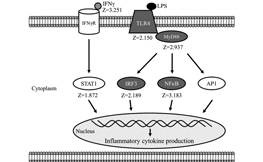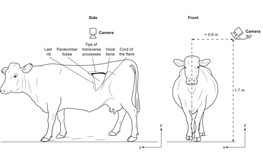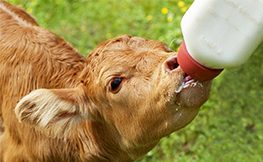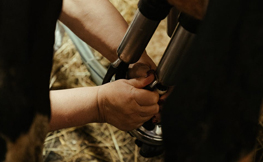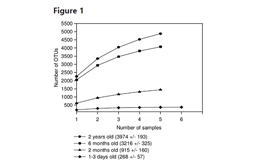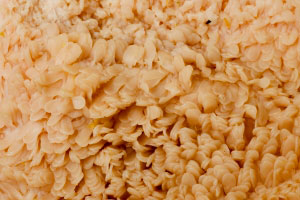
Rumen Health Technical Guide
Leading ruminant experts have written the Rumen Health Technical Guide. This resource is free to veterinarians, nutritionists and producers, request a copy today.
 Get a copy
Get a copy
Rumen Development
A mature microbial ecosystem is necessary to ensure the full capacity to digest solid feed.
When a young ruminant is born, its rumen is considered a sterile environment that contains no bacteria or other microbial life. The young ruminant is naturally exposed to different microbes through the dam’s birth canal and vagina, saliva, skin and feces.
- AnaerobicGlossaryView allAnaerobiosisGlossaryView allAnaerobiosisGlossaryView allAnaerobiosisGlossaryView allAnaerobiosis
Life conditions without oxygen.
Life conditions without oxygen.
Life conditions without oxygen.
Life conditions without oxygen. bacteria appear a few hours after birth - CellulolyticGlossaryView allCellulolyticGlossaryView allCellulolyticGlossaryView allCellulolyticGlossaryView allCellulolytic
Capacity to hydrolyze cellulose.
Capacity to hydrolyze celluloseGlossaryView allCelluloseGlossaryView allCellulose
The main carbohydrate contained in cell wall of plants. Cellulose is digested by ruminants thanks to enzyme produced by some cellulolytic bacteria.
The main carbohydrate contained in cell wall of plants. Cellulose is digested by ruminants thanks to enzyme produced by some cellulolytic bacteria. .
Capacity to hydrolyze celluloseGlossaryView allCellulose
The main carbohydrate contained in cell wall of plants. Cellulose is digested by ruminants thanks to enzyme produced by some cellulolytic bacteria. .
Capacity to hydrolyze celluloseGlossaryView allCellulose
The main carbohydrate contained in cell wall of plants. Cellulose is digested by ruminants thanks to enzyme produced by some cellulolytic bacteria. . bacteria and methanogenic archaea appear at 2-4 days of age - AnaerobicGlossaryView allAnaerobiosis
Life conditions without oxygen. fungi colonize the rumen during the second week - Ciliate protozoa begin to be established only during the third week.
Pre-ruminant colonization sequence of rumen microflora (lamb model) 1ReferenceView allFonty G., Senaud J. , Jouany J.P. , and Gouet P. 1987.
2ReferenceView allChaucheyras-Durand F., Ossa F. 2014.
3ReferenceView allJami E., Israel A., Kotser A., and Mizrahi I. 2013.
4ReferenceView allLi R.W., Connor E.E., Li C., Vi Baldwin R.L. and Sparks M.E. 2012.
5ReferenceView allMinato H., Otsuka M., Shirasaka S., Itabashi H., Mitsumori M. 1992.
6ReferenceView allRey M., Enjalbert F., Combes S., Cauquil L., Bouchez O., and Monteils V. 2014.
7ReferenceView allMalmuthuge N., Griebel P.J., and Le L. Guan. 2014.
8ReferenceView allSteele M. A., Malmuthuge N. and Guan L. L. 2015.
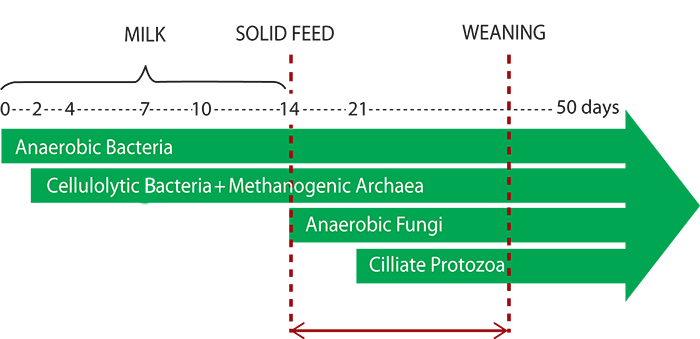
The separation may occur early; the newborn ruminant naturally undergoes stress, suppressing immunity and delaying rumen development.
The transition from milk to solids can also occur when microbial colonization is incomplete 3ReferenceView allJami E., Israel A., Kotser A., and Mizrahi I. 2013.
and result in frequent digestive disorders in the young animal.
Diversity of microbial communities in the rumen depends largely on diet composition. 9ReferenceView allFonty G., Gouet P., Jouany J.P., and Senaud J. 1983.
The development of the rumen (weight, wall thickness and papillae number, integrity and length) is highly dependent on the level of complexity of its microbiotaGlossaryView allMicrobiotaGlossaryView allMicrobiotaGlossaryView allMicrobiotaGlossaryView allMicrobiota
A microbiota is the whole of the ecosystem (bacteria, yeast, fungi and viruses) living in a specific environment. Intestinal microbiota was previously called “intestinal flora.”
A microbiota is the whole of the ecosystem (bacteria, yeast, fungi and viruses) living in a specific environment. Intestinal microbiota was previously called “intestinal flora.”
A microbiota is the whole of the ecosystem (bacteria, yeast, fungi and viruses) living in a specific environment. Intestinal microbiota was previously called “intestinal flora.”
A microbiota is the whole of the ecosystem (bacteria, yeast, fungi and viruses) living in a specific environment. Intestinal microbiota was previously called “intestinal flora.”. Grain feeding increases the concentration of butyric acid in the rumen, which stimulates papillae growth.
A mature microbial ecosystem is necessary to ensure the full capacity to digest solid feed. Optimal animal growth and performance relies on:
- Rapid establishment of microbial populations,
- Development of an abundant and functional microbiota,
- Stimulation of intake and digestive activity,
- Maximizing the absorptive capacity of the rumen wall.

